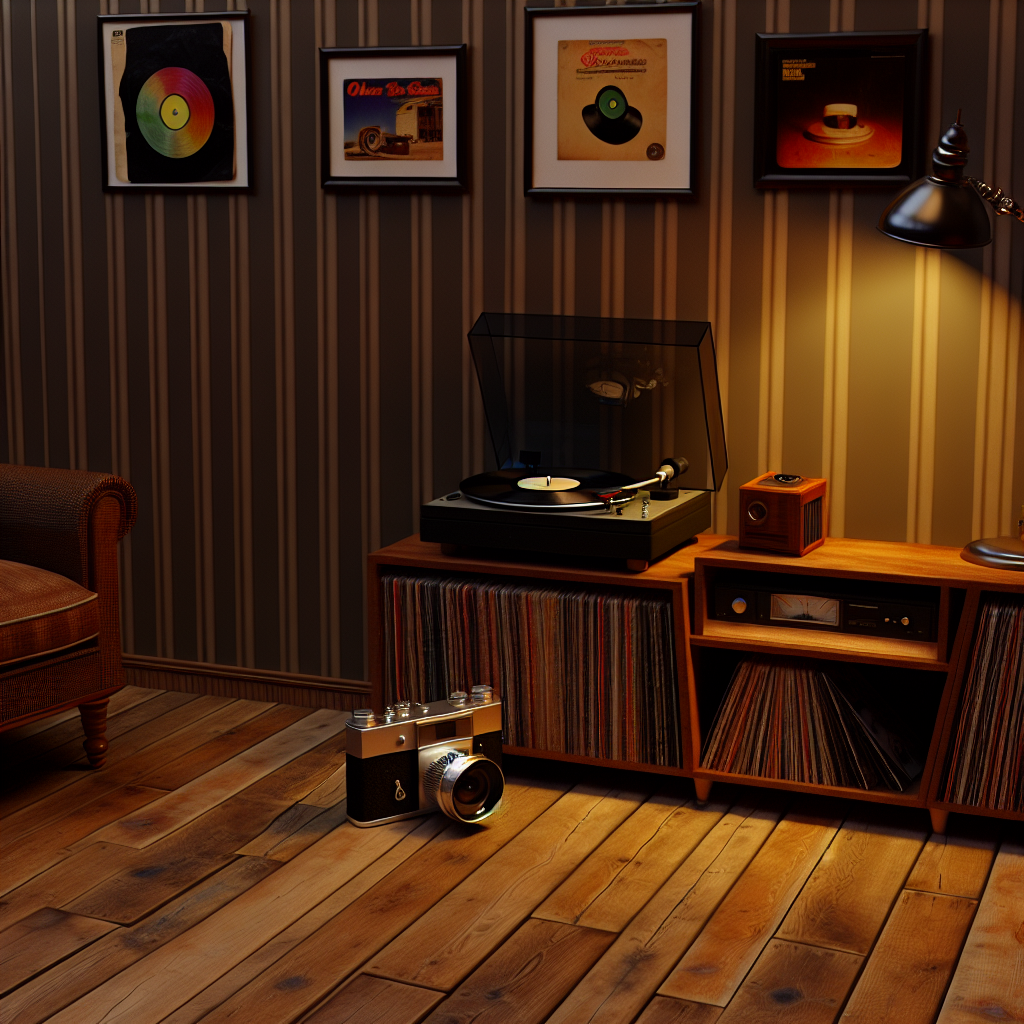The Resurgence of Analog: Why Vinyl Records and Film Cameras Are Making a Comeback

The unmistakable crackle of a vinyl record spinning on a turntable and the satisfying click of a shutter on a film camera have, remarkably, resurfaced in a world dominated by digital downloads and smartphone cameras. This resurgence of analog formats, an unlikely renaissance in an age deeply entrenched in digital convenience, speaks volumes about our incessant yearning for authenticity and tangible experiences. The revival of vinyl records and film cameras is not merely a nostalgic nod to the past; it’s a cultural phenomenon bespeaking our humanity and the way we choose to interact with the media we consume.
The Sensory Appeal
Analog formats offer a sensory experience that digital can’t quite replicate. With vinyl, there’s a tactile interaction the deliberate placement of the record onto the turntable, the gentle lowering of the needle. These physical actions contribute to a ritual that, according to me, digital formats simply can’t match. This ritual fosters a deeper emotional engagement with the music.
Similarly, film photography requires thoughtfulness and patience. The process of loading film, manually setting exposures, and waiting to develop photos adds a deliberate nature to the art form. Every shot is precious, causing photographers to slow down and consider their composition, thus enhancing the creative process.
A friend once told me about his experience rediscovering film photography during a road trip across the American Southwest. He recalled the anticipation of waiting to develop his rolls of film, contrasting it with the instant gratification of digital images. “It was like reliving the trip all over again,” he said, “Each print a surprise, each frame a story.”
Nostalgia and Authenticity
There is something undeniably alluring about nostalgia. Analog technology is often associated with simpler times, evoking a sense of nostalgia that is powerful and persuasive. Vinyl records and film cameras transport users back to an era where life felt less cluttered and perhaps more genuine. In a fast-paced, throwaway society, using these formats feels like an act of rebellion a way to slow down and savor the moment.
But beyond nostalgia, there is a quest for authenticity. Many audiophiles argue that vinyl records, with their warm sound and dynamic range, capture music in a way that digital recordings cannot. The imperfections inherent in analog sound the pop of the needle, the hiss of the record add a richness and depth that some say digital lacks. Similarly, film can often capture the nuances of light and shadow in a way that is both unpredictable and charming. It’s like having the soul of the subject preserved on celluloid.
An Unexpected Counterargument
However, it’s important to acknowledge that there are detractors who argue against the supremacy of analog formats. From an environmental standpoint, the production and disposal of vinyl records and film may be considered less sustainable compared to digital formats. The chemicals used in film development and the plastic production of vinyl records contribute to pollution and waste.
Additionally, some may argue that the pursuit of analog formats is an elitist endeavor. Vinyl records can be expensive, as can the equipment needed to properly play them. Film photography, with its ongoing costs of purchasing film and developing photos, can also be financially prohibitive for many.
Cultural Identity and Expression
The renaissance of these analog formats also signifies a shift in cultural identity and individual expression. For millennials and Gen Z, who didn’t grow up with these technologies, vinyl and film offer a way to differentiate from the status quo and craft a unique identity. Collecting records or shooting with film enables a form of self-expression that digital formats rarely afford.
The independent music scene has embraced this shift, with many new bands releasing music on vinyl. This isn’t just about appealing to a niche market; it’s about crafting a tangible connection with their audience. A digital download, while convenient, doesn’t offer the same physical connection as a record with its beautifully crafted cover art and liner notes.
Moreover, the trend of “slow living” a deliberate attempt to slow down the pace of modern life finds a perfect companion in analog formats. They encourage us to be present, to consume media thoughtfully and with intention, rather than passively.
Personal Narratives and Community
These formats also become vessels for personal narratives. My father’s collection of vinyl records, built over decades, tells the story of his life, his tastes, and his journey through music. Each record has a memory attached, a concert attended, or a moment in time captured. Film photographs, too, are moments frozen not just in time, but in the emotion of the moment they were taken.
Communities have also emerged around these formats, creating spaces for enthusiasts to share knowledge, experiences, and collections. Record stores and camera shops, once thought to be relics of the past, have found new life as cultural hubs where people gather not just to purchase, but to connect. Local meetups, workshops, and online forums offer spaces for enthusiasts to bond over shared passions, deepening the culture surrounding these formats.
The Role of Technology
Interestingly, the resurgence of analog has been facilitated, in part, by digital technology. Social media platforms have amplified interest by showcasing the aesthetic appeal of vinyl and film, while online marketplaces have made acquiring these formats easier than ever before. This paradox of using digital means to celebrate analog nostalgia is, according to me, one of the most fascinating aspects of this trend.
Moreover, technology has also evolved to support these formats. Modern turntables with USB connectivity allow listeners to digitize their vinyl collections, blending old with new. Hybrid cameras that shoot both digital and film provide photographers the best of both worlds, marrying the convenience of digital with the charm of analog. This intersection creates a dynamic dialogue between past and present, traditional and modern.
What’s Next?
As we look to the future, the embrace of analog formats seems likely to continue, driven by the human desire for experiences that feel genuine and rooted. However, in my opinion, we might see a greater emphasis on sustainable practices within the industry. Innovations that reduce environmental impact, such as more eco-friendly vinyl production methods or sustainable film development processes, could become a significant focus.
There might also be an increased crossover between analog and digital technologies, creating products that merge the tangible with the ephemeral. This can create new opportunities for artistic expression and new ways for consumers to interact with media.
In the grand tapestry of culture, the resurgence of vinyl records and film cameras is more than a fleeting trend; it’s a profound statement about how we, as a society, seek meaning and connection in the media we choose to engage with. Perhaps, amidst the relentless march of progress, it’s a gentle reminder to us all that sometimes, looking back can help us move forward.


